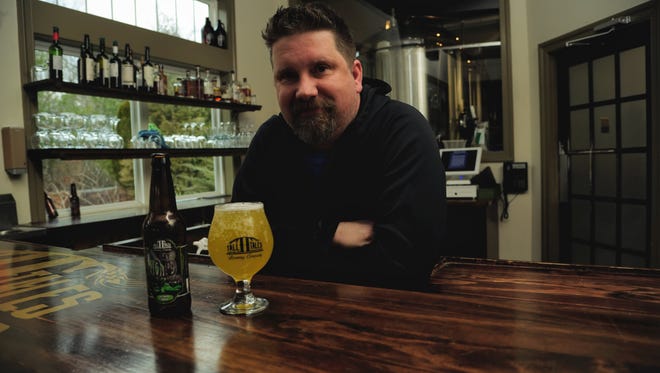There's more to St. Patrick's Day than green beer: Russo

The compulsion to drink green beer on St. Patrick’s Day is a legitimate, though baffling, phenomenon.
If you never have had one you’re not missing much, except for the incongruity that comes from drinking something that looks green and tastes, well, like light beer.
If you celebrate St. Patrick’s Day with any amount of enthusiasm at all, at some point this weekend you will be told pointedly and unsolicitedly that St. Patrick’s Day isn’t such a big deal in Ireland (or some variation of it). But it also is a religious holiday, technically, although we tend to celebrate it in a very secular and American way.
And, until recently, the only thing more American than our St. Patrick’s Day celebrations were the green beer people drink with their corned beef and cabbage. Americans have been dying beer green since at least the early 1900s on the occasion of the Feast of St. Patrick.
MORE: St. Patrick's events: Where to get your Irish on along the coast
MORE: Seacrets looks toward expansion with help from new Maryland legislation
In recent years, American independent craft breweries surpassed the innovation of adding blue dye to beer (blue and yellow make green) by adding variety and daring to the beers we can drink, and they come in colors other than yellow and black.
Tall Tales Brewery in Parsonsburg, actually has released a lime-green beer to coincide with the holiday called Key’d, a key lime sour ale that probably is the best greenish beer you will be able to get your hands on this weekend.

Brewer Eric Camper used four times the recommended amount of limes for the sour ale, so it tastes a lot greener than it looks. It’s a relatively low alcohol beer, so you can have a couple.
Of course, some people want to have more traditional “Irish” beers for St. Patrick’s Day. If that’s the case, Tall Tales’ flagship beer, Redheaded Stepchild, is an Irish red ale that is super drinkable. Camper said that Irish reds (as well as Irish stouts) are made with an Irish yeast that gives them a distinct flavor.
When celebrating a holiday that is more a take on immigrant pride than on Irish tradition, it would make sense to try drinking the Americanized versions of Irish beers.
There are plenty of great craft Irish reds that aren’t imports. In addition to Red Headed Stepchild, Flying Dog has a solid one called Lucky SOB, but this time of year there are plenty on the shelves to choose from. Dogfish Head had one on tap at Chesapeake and Maine that is featured in their traditional St. Pat’s menu.
What makes Irish reds so popular is they aren’t highly hopped, so the sweet malt flavor shines through nicely. It will pair well with corned beef and cabbage, especially if you’re not above using mustard, and the flavor livens up the traditionally less-than-flavorful boiled meat.
Irish dry stouts, like Brooklyn and Harpoon both make great ones, are best served with sharper cheeses, shepherd's pie and hardier dishes. What sets Irish dry stouts apart is their roasty flavor and (often) low alcohol. Rise Up stout by Evolution Craft is a solid local stout. The coffee only deepens the already roasty malt flavor.
Checking the tap rooms, Big Oyster has a breakfast stout it is bringing out for a St. Patrick’s Day breakfast hosted at the brewery.
If you want to split the difference and have something both Irish and super-nontraditional, try the Death By Coconut Irish Stout by Oskar Blues. They didn’t cheap out on the coconut by any stretch of the imagination, so it is one of those beers that’s divisive along taste lines that have nothing to do with beer. There might not be a beer that pairs better with Irish soda bread.
Finally, if you’re committed to American IPAs and pale ales it is important to remember that they turn green as well if you add a drop or two of blue food coloring. There truly are worse ways to split the difference.